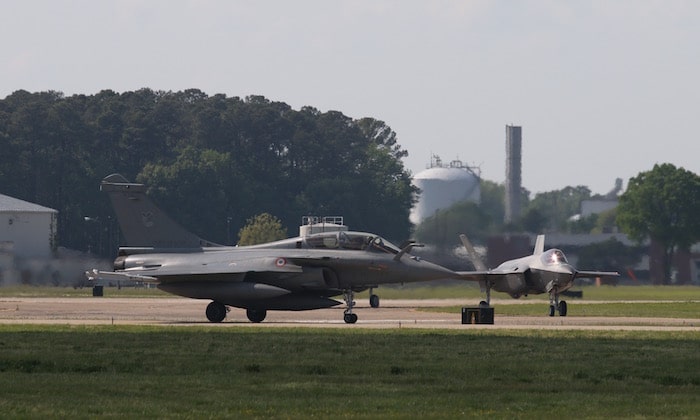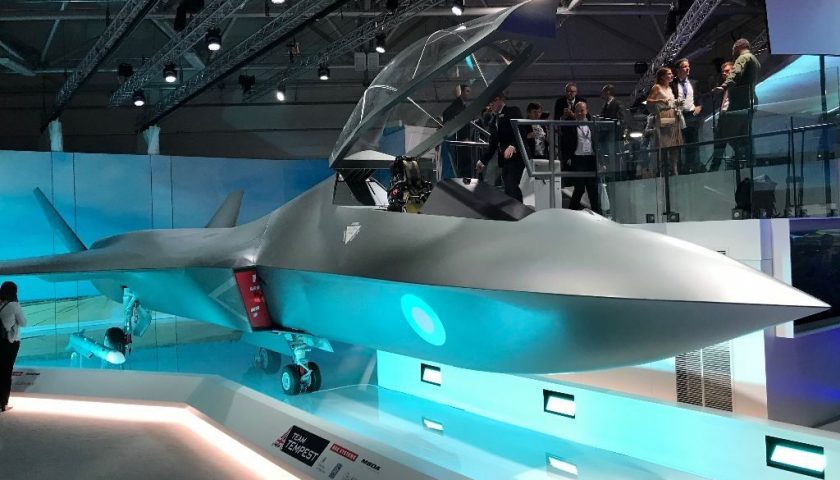Among the most important operational failures to which many air forces in Europe will be exposed over the next decade, the most significant, beyond questions of format, is undoubtedly the absence of electronic warfare aircraft. Indeed, faced with efficient multi-layer anti-aircraft defense systems, such as Russian Defense, European devices, such as the Rafale, Typhoon, the Gripen or the F16, find themselves very exposed, and in fact very threatened. However, the loss of its air support capabilities would mean for NATO, the loss of the majority of its firepower, leaving only the land forces, which we know are insufficiently equipped for high-intensity combat, to stand up to armored divisions with 5 times more armored vehicles, and 10 times more mobile artillery systems than the Europeans.
Despite this critical flaw, there are only 150 aircraft capable of carrying out this type of mission within NATO, the US Navy's EA 18G Growler, which is also in high demand in the Pacific theater. The F35A and B of certain European air forces, and the few F22s deployed by the US Air Force, will perhaps be able to operate close to Russian anti-aircraft defenses, but the multiplication of detection systems of different types, and the fusion of information at the divisional level of Russian anti-aircraft defense, coupled with the interception capabilities of the Su30, Su35, Mig31 and soon Su57, very clearly superior in number to the 5th generation aircraft in Europe, are likely to quickly erode these theoretical capacities. Without the air superiority resulting from the neutralization of Russian anti-aircraft defense, NATO would find itself in a situation of dramatic vulnerability.
Lessons from the US Navy
Since the Vietnam War, the US Navy, accustomed to missions requiring “first entry” over hostile and sometimes fiercely defended territory, has accompanied its bombing raids by aircraft responsible for neutralizing enemy radars, and possibly eliminate them. The EA6B Prowler carried out this mission for almost 50 years, from 1970 to 2019. It is today replaced by the EA18G Growler, intended for the same missions. Not only does the US Navy systematically use this type of aircraft, but it uses a lot of them, 1 jamming plane for every 6 combat aircraft; a figure which has continued to increase over the years, since it was only 1 in 12 at the beginning of the 70s. It must be said that over the same period, anti-aircraft defense systems have been modernized , have seen their performances expand, and have become both denser and more democratized.

In addition, the most efficient defense systems, such as those deployed in Russia or China, are made up of a set of complementary and diversified systems, deployed over a vast territory, requiring more powerful and more numerous means of jamming. And this has a cost, the Growler program having cost $3 billion to design, including for the advanced versions of the HARM anti-radar missile, and each device alone costs $70 million Fly Away.
What needs in Europe
Like the US Navy, the air forces of many European countries, including France and Germany, the two largest numerically, only have so-called 4th generation aircraft, being unable to rely on their stealth alone to evolve near modern defenses. Certainly, devices like the Rafale French, or Typhoon European, have efficient self-protection systems, but they are insufficient in the face of a multi-layer defense like Russian Defense. An electronic warfare device is essential in Europe. In addition, the ratio used by the US Navy, resulting from feedback from numerous engagements, seems ideally suited to meet the needs of these air forces, i.e. one electronic warfare aircraft for 6 combat aircraft.
In fact, on the FCAS perimeter, the new generation combat aircraft program carried by France, Germany, and Spain, these countries aligning an air force of 250+210+140 = 600 aircraft, the need in terms of electronic warfare aircraft would amount to 100 examples, or 42 for France including 8 for naval aviation, 35 for Germany and 23 for Spain.
Program and funding needs
While France today uses the plane Rafale, Germany and Spain use the Typhoon. There is obviously no question of hoping that France will be able to implement squadrons of Typhoon, especially since the device is not navalized, nor will Berlin or Madrid consider choosing a solution on the basis of Rafale. The solution can therefore only be a mixed development, namely a program of programs, pooling the developments which can be, such as on-board electronic warfare systems, but allowing each actor to integrate it into its own program, Rafale in France, the Typhoon German-Spanish side. This solution, without being optimal from the point of view of development costs, will be optimal regarding the conditions of maintenance and crew training, which today represent more than half of the costs of owning a combat aircraft.

In fact, on the basis of the figures concerning the Growler program, we can estimate that the development costs of the common jamming solution, including that of a new anti-radiation missile, would amount to €2 billion, and the integration in each device would amount to €1 billion. Based on the known prices of Rafales B and M, and Typhoon two-seaters, the costs would therefore be as follows
- jamming systems and anti-radiation missile: €2 billion
- Rafale Electronic warfare B: €80m
- Rafale M of electronic warfare: €90 m
- Typhoon two-seater electronic warfare: €100m
Excluding ammunition and spare parts, these amounts, broken down in proportion to the number of devices in the 3 countries, break down as follows:
- France: €840m R&D + €2.720m AA + €720m MN = €4,280bn
- Germany: €700m R&D + €3.500m = €4,200bn
- Spain: €460m + €2.300m = €2,760bn
- Total: €2,000 billion R&D + €9,240 billion = €11,240 billion
To these figures, it is appropriate to add the possibility of significant export outlets for these devices, with India, Qatar and Egypt for Rafale, Austria, Saudi Arabia, Oman and (again) Qatar for the Typhoon, representing between 30 and 70 potentially exportable aircraft, and which could even open up new export prospects for both aircraft.
Conclusion
While France, Germany and Spain have joined forces to design the Air Combat System of the Future, it would be beneficial in every way to take advantage of this convergence of ambitions and destiny to guarantee European defense capabilities at from 2025, when the balance of power between the West and the Sino-Russian bloc will be the most unfavorable. Such a program, not representing €500m/year over 10 years for France and Germany, and barely more than €250m per year for Spain, would also make it possible to quickly consolidate technological collaboration between the 3 BITD, sees opening opportunities in certain export markets, in Europe (Switzerland, Finland, Greece, etc.) as well as in the World. It could even serve as a pivot for a rapprochement with the Anglo-Swedish Tempest program, as with Italy. Finally, with 3 European countries already involved, it would fit perfectly within the framework of European programs, such as PESCO.

In addition, the skills acquired, whether for technological aspects or operational aspects, during this program will, without a doubt, be widely used in the FCAS program itself.
Finally, and without entering, once again, into a demonstration on the budgetary and social return of Defense industrial investment, this program would guarantee European air forces having the capacity to neutralize, if necessary, the most common anti-aircraft defenses. more evolved, so as to maintain the status quo which has guaranteed peace in Europe for decades, without the need to strengthen the American presence on the continent.
In the end, that's a lot of crucial and strategic points, for only €500m per year...
